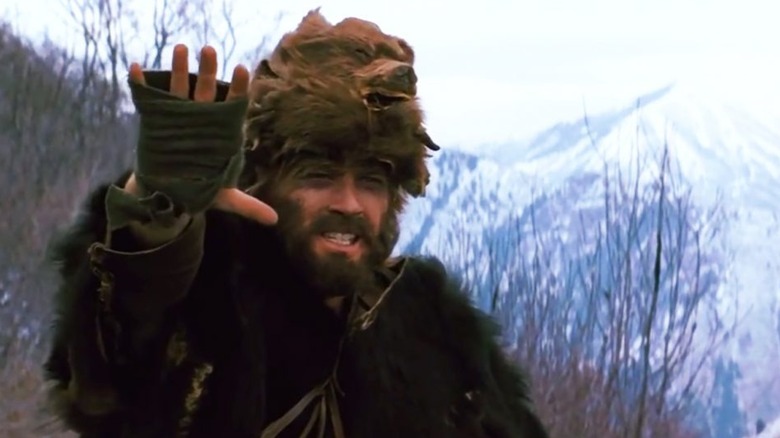Where Was Jeremiah Johnson Filmed?
When most people imagine a classic Western movie, they probably think of cattle drives, shootouts in the town square, train robberies, and the sun beating down on you as your ride your horse across the desert. When folks think of the actors who typically star in films of this sort, they might picture Clint Eastwood and John Wayne, men who serve as the blueprint for both heroic and antihero gunslinger types. However, there's more to the genre of Westerns than meets the eye.
There is no better example of this sentiment than "Jeremiah Johnson" (via IMDb). Directed by Sydney Pollack, this 1972 drama stars Robert Redford as the titular frontiersman. Per Freerange American, the Western is based on the 1965 Vardis Fisher book "Mountain Man: A Novel of Male and Female in the Early American West" (via Goodreads). Fisher's book includes a discussion of the life of John "Liver-Eating" Johnson, an actual mountain man from the 1800s, who serves as a model for Redford's character.
"Jeremiah Johnson" follows Redford's character as he attempts to live off the land of the Rocky Mountains. During his transformation into a rough-and-ready hermit of the American West, he masters the harsh environment of the Rockies, falls in love and starts a family, and participates in a feud involving a Native tribe local to the area. It all adds up to be a beautiful (if romanticized) picture of a hardened survivalist. In a certain way, the events of the movie feel very real, partially because of where "Jeremiah Johnson" was filmed.
Jeremiah Johnson's filming locations add authenticity
"Jeremiah Johnson" director Sydney Pollack and the film's crew made a good choice in picking around 100 locations around Arizona and Utah to shoot the movie in the early 1970s (via The Cinemaholic). According to an archived report on the filming locations from Desert News in 2013, the movie was primarily filmed in Utah. Specific locations listed in the Desert News report include Zion National Park, Alpine Loop and Mt. Timpanogos, Leeds, Snow Canyon, St. George, Sundance, Uinta National Forest, Ashley National Forest, and Wasatch-Cache National Forest. With its many national parks and forests, Utah had an abundance of places that still felt like the wild and untamed landscape of the American frontier.
In a 1973 interview with The Harvard Crimson, Pollack reflected on how difficult the winter weather of the Rockies resulted in production difficulties. "Up in the mountain, in the scenes with new snow, you couldn't have the actor's tracks in the shot. You'd have to take a snowmobile, move the actor into [the] thicket by some back way, and call him on a two-way radio to come out," the director said.
Other scenes were filmed in the middle of heavy snowstorms or had to be set up in the wee hours of the morning and filmed in as little as one take. In spite (or perhaps because) of these weather-related difficulties, however, "Jeremiah Johnson" carries an authenticity to it that sells the drama. Because of that, it remains a notable entry in Western cinema.

